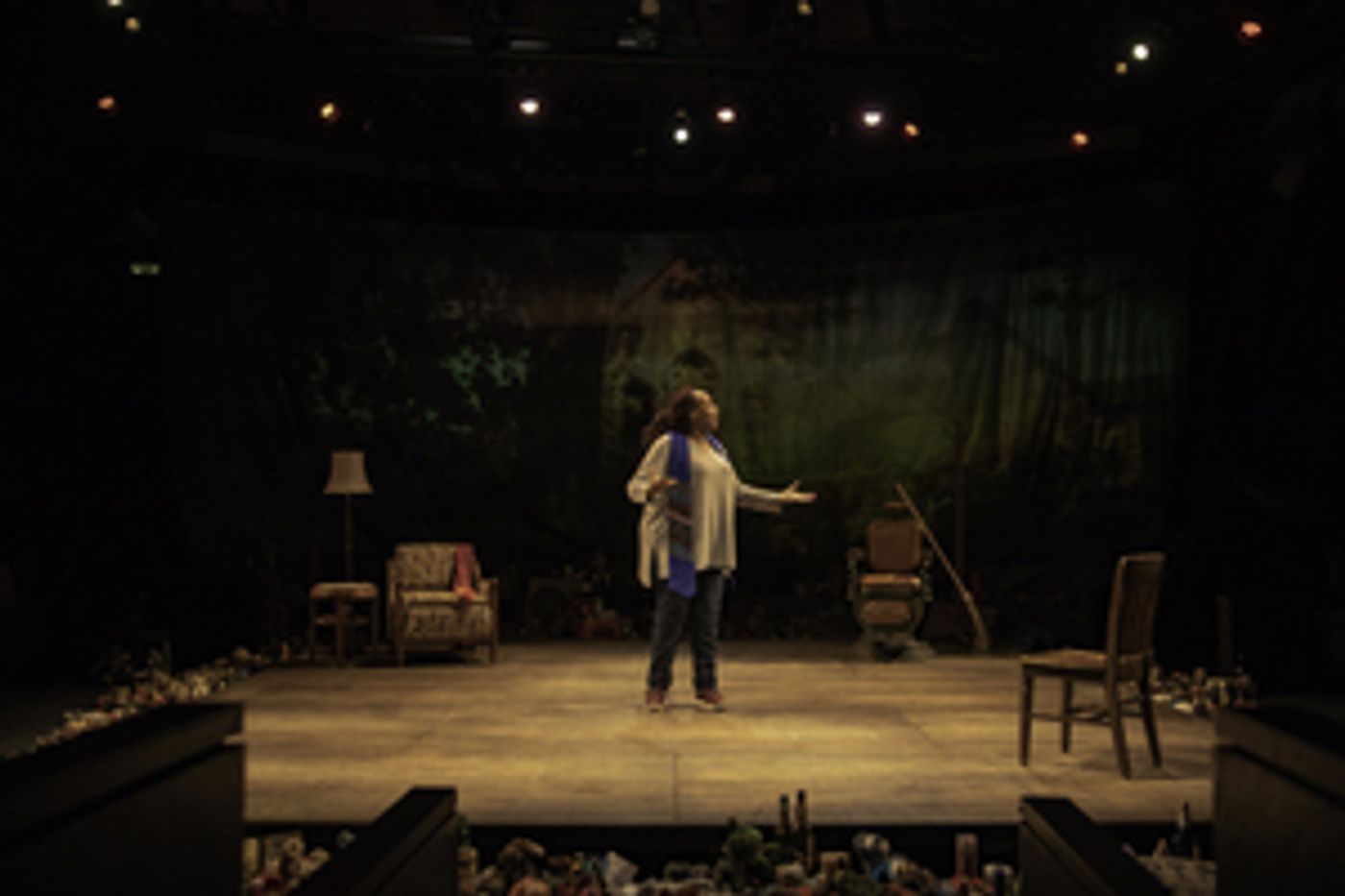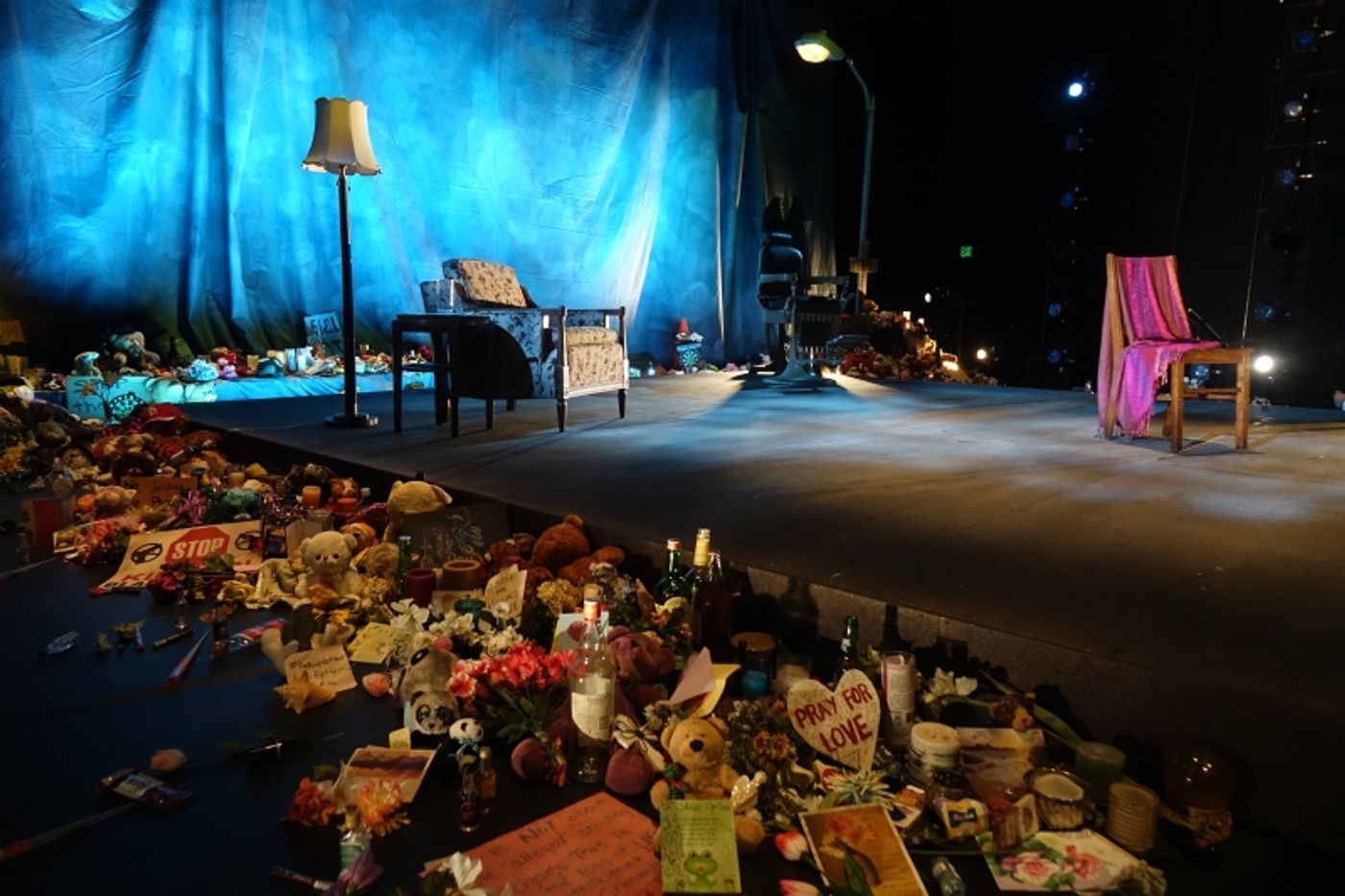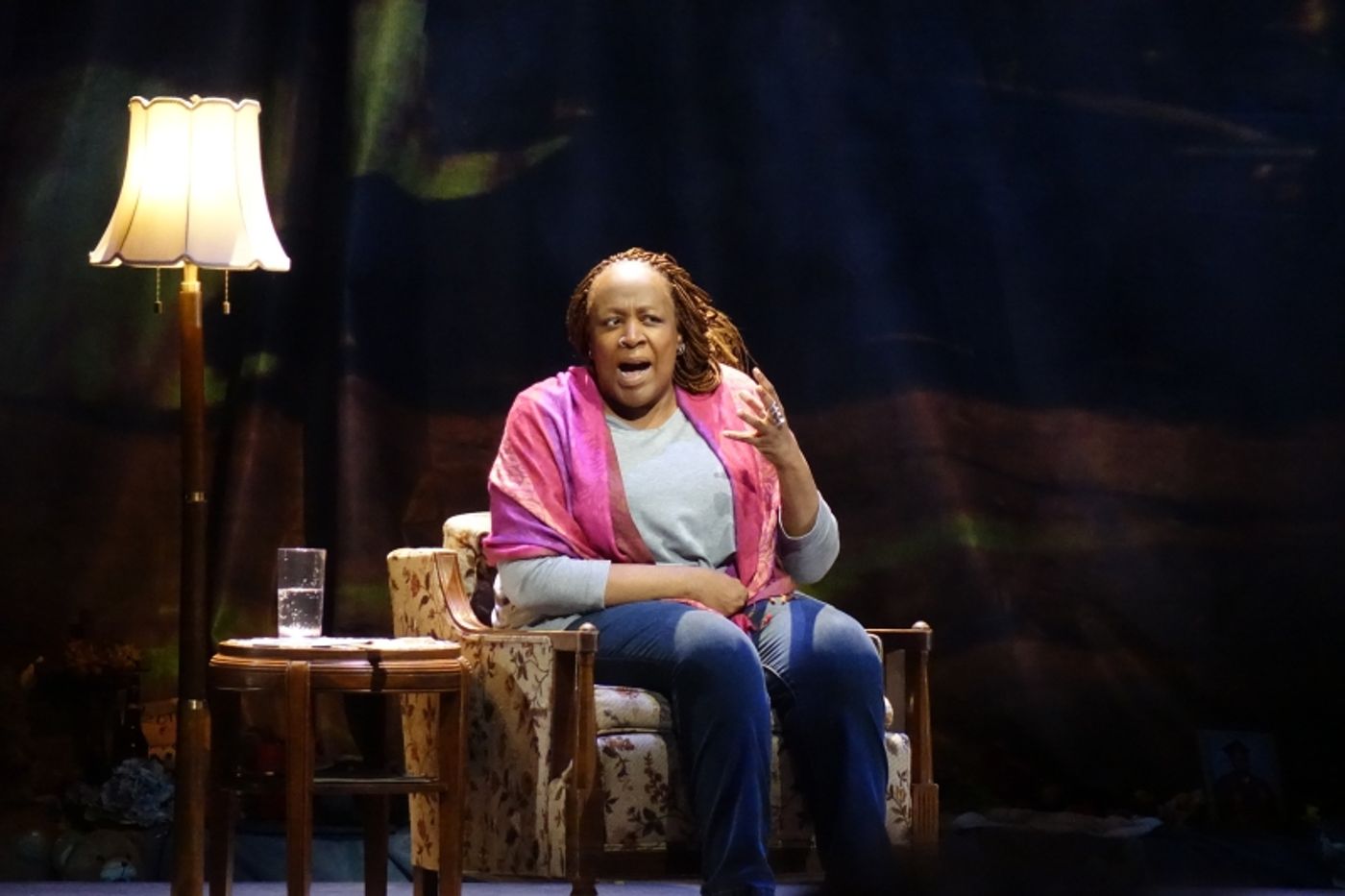Review: UNTIL THE FLOOD at Spoleto's Festival Hall
UNTIL THE FLOOD overflows with inner city insights.

Conceived and acted by Dael Orlandersmith, UNTIL THE FLOOD is an amazing, transformative theatre experience, briefly at Spoleto Festival USA through June 6.
You quickly got the feeling that it was even more transformative for the playwright while she was interviewing the people she portrays - and likely transformative for the actress inhabiting those people before you. Commissioned by The Repertory Theatre of St. Louis in 2016, Orlandersmith was tasked with crafting a response to the shooting of Michael Brown by policeman Darren Wilson in nearby Ferguson, Missouri, on the night of August 9, 2014.
In carrying out her mission, Orlandersmith's inquiry was an examination and a diagnosis of the effects of Brown's shooting - not an investigation of the fatal event seeking to determine culpability. Her fundamental, open-ended question to many Ferguson and St. Louis residents, Orlandersmith told us in a public conversation at Spoleto during her run, was How did this event affect you?
Out of the answers she received - some of them stunning, no doubt - Orlandersmith forged eight composites, each of whom delivers a monologue until we circle back to retired English teacher Louisa Hemphill in completing our 75-minute visit to Ferguson. Set designer Takeshi Kata is sharply focused on making us feel like we are truly in Ferguson, with nearly antique objects such as a lamppost, an easy chair, a floor lamp, a coat stand, and a barber's chair strategically strewn across the Festival Hall stage. This simple layout was surrounded by the sort of grassroots memorial that always seems to sprout up at the site of heart-rending American murders, a profusion of flowers, candles, cuddly stuffed animals, scribbled cards and messages, framed photos, and liquor bottles.

Kaye Voyce's costume designs, all that Orlandersmith really needed to quickly change character, echoed the inner city decrepitude. A couple of shawls and a few jackets - including a camo hoodie and a St. Louis Cardinals warmup - partially signaled the changes, while Nicholas Hussong's video designs darkly completed the settings for the monologues. Helpfully, they were impressionistic depictions of building exteriors rather than realistic indoor depictions, so we knew we were at a steak house for retired policemen Rusty Harden, a wine bar for high school teacher Connie, and Reuben Little's barbershop. The scene only brightened a little when minister Edna Lewis draped herself in a clerical shawl and we saw a rather photographic representation of her church.
So all of these Orlandersmith composites are rather specific and sharply drawn, usually memorable for at least one vivid anecdote in each monologue. We get to know the backgrounds of Hassan, the fluid rapper, racist electrician Dougray Smith, and aspiring high school student Paul, for in delving into how these people became who they are, the playwright was exploring how we became who we are.

Orlandersmith sought to be objective in order to be revelatory. She is keenly selective in what she relays to us and artful in how she orders her materials and lifts her respondents' words imaginatively into the hallowed realm of theatre. Resisting the urge to layer on subsequent racial and political episodes as she continues traveling with her show, she has let UNTIL THE FLOOD accrue an aura of authoritative prophecy with the passage of time. The flood has only deepened since 2016.
Even though Orlandersmith steps out of character to offer a brief coda at the end, she never tips off her point of view. But we can detect patterns. The three women are cordial and rational while, with the exception of the soft-spoken Paul, toxic masculinity runs riot among the five men. Reuben and Rusty are the most workaday specimens while Hassan and Dougray are the most dangerous and explosive. Mary Louise Geiger's lighting is darkest and bleakest when these menacing men are before us.
About the only time I found Orlandersmith gently manipulating her monologues, so that we saw what she saw in Ferguson, was in the sequence of confessionals from the retired cop and the rapper who followed immediately afterward. Rusty, the retired white cop, still remembers the wild look of in the eyes of Black youths, approaching him or at close quarters, seeming to be daring him to fire his gun - sometimes wanting him to. Working himself into a fury, the cool fluid rapper Hassan loudly proclaims that he had such feelings. Yes, that exact death wish that had just astonished me when the cop spoke of it.
Could there really be such desperation rampaging through our cities and ghettos? Orlandersmith confirmed her viewpoint the following afternoon in her conversation Martha Teichner, casually turning to the audience during the Q&A and asking us, "Have you ever heard of suicide by cop?"
I had not - which capsulizes why it was so vital for me to hear and heed UNTIL THE FLOOD.
Reader Reviews

Videos

